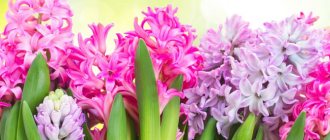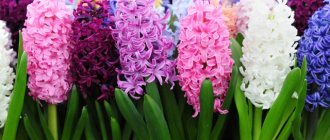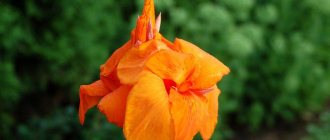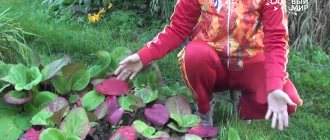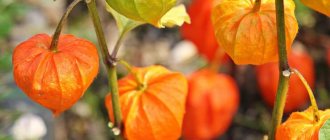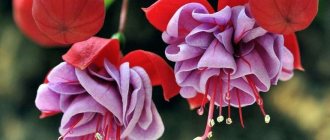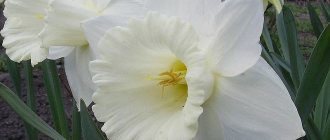Author: Tamara Altova. August 31, 2018
Category: Garden plants.
Hyacinth (lat. Hyacinthus) is a genus of bulbous plants of the Asparagus family. Previously, this genus was classified as a separate family Hyacinthaceae or included in the Liliaceae family. Some researchers count up to 30 species in this genus, others consider the genus to be monotypic, that is, including one species, but with a large number of forms and varieties. In the wild, hyacinths grow in Central Asia and the eastern Mediterranean, but in cultivation they are grown everywhere.
The hyacinth plant received its name in honor of the hero of the ancient Greek myth - a beautiful young man who was the lover of Apollo and died due to the jealousy of the wind god, who was also in love with Hyacinth. In memory of his dead friend, Apollo created a beautiful hyacinth flower from his blood.
In 1543, hyacinth was brought from Asia Minor to the botanical garden of Padua, in northern Italy, and gradually became a flower of luxury: it was grown in the gardens of the rich and aristocrats. In the 18th century, Dutch breeders showed interest in hyacinth, fascinated by its aroma and dense texture of petals, and soon white, cream, soft lilac, raspberry, blue and, eventually, even yellow hyacinths appeared. They were developing new varieties of this plant in both Germany and France. Today, hyacinths are grown not only in gardens, but also at home, and recently it has become popular to plant hyacinth bulbs for forcing in order to get a beautiful flower by a certain date.
Hyacinth flower - description
The perennial hyacinth has a dense bulb, consisting of lower, fleshy leaves that occupy the entire circumference of the bottom, the direct continuation of which is the peduncle. A racemose inflorescence of brightly colored bell-shaped flowers with bent perianth lobes is formed on the stem. After flowering is completed, the stem and the green leaves sitting at the very bottom dry out, but a bud forms in the corner of the upper leaf, which will become a bulb and produce a peduncle next season. Bulbs can also form in the corners of other hyacinth leaves, which can be separated and grown so that after a few years they also throw out flower shoots. The hyacinth fruit has the appearance of a leathery three-lobed capsule, in each nest of which two seeds ripen.
Transplanting hyacinths to another place in the fall
As we have already written, hyacinth bulbs are dug out of the ground every year. This is done in the summer, when the leaves and flower stalks wither - at the end of June or at the beginning of July. If you leave the bulbs in the ground, next year the flowering of hyacinths will be sparse. When are hyacinths transplanted - in spring or autumn? Like the primary planting, which is carried out from September to November, replanting hyacinths in the fall is most justified. It is carried out in the same time frame and according to the same procedure as the initial planting of hyacinths, which we described earlier.
- Repelling mosquitoes with plants
Planting hyacinths in open ground
Soil for hyacinths
These early flowers are grown in well-lit places protected from the wind, away from bushes and trees, the roots of which do not allow hyacinths to fully develop. In the area where hyacinths grow, melt and rain water should not stagnate, so you need to choose places with a flat surface or a slight slope for planting flowers. Groundwater should lie on the site no closer than at a depth of 50 cm.
Hyacinths prefer well-drained soils with a high content of humus, but fresh or incompletely decomposed manure is not suitable for fertilizing the site. Peat and river sand must be added to clay soil for digging, and acidic soil must be neutralized with limestone or chalk, since hyacinth needs a pH of at least 6.5 units.
When to plant hyacinth
The area for hyacinths needs to be prepared at the end of summer, in August, so that the soil has time to settle two months before planting. If you dig up the area immediately before planting, then as a result of natural subsidence of the soil, the developing roots of hyacinths may break off. Dig the soil to a depth of 40 cm, adding 10-15 kg of humus, 60-80 g of superphosphate, 15 g of magnesium sulfate (or 250-250 g of dolomite flour) and 30 g of potassium sulfate (or 150-200 g of wood ash) per m². ). Peat and sand are added to clay soil, and when processing sandy soil, the rate of magnesium and potassium fertilizer is increased by one and a half times. Acidic soil is limed two weeks before fertilizing.
Hyacinths are planted at the end of September or in October - the specific dates depend on the climatic and weather conditions of the area. If you plant hyacinths too early, they will grow and die in winter, and if you are late with planting, the bulbs will not have time to take root before the soil freezes and, at best, they will simply lie in the ground until spring, and at worst, they will die.
Planting hyacinths in the ground
When choosing planting material, you should give preference to medium-sized bulbs, the so-called “flower beds”: hyacinths grown from them form flower shoots that are more weather-resistant. Bulbs that are flaccid, soft, rotting or with mechanical damage are not suitable for planting. Healthy planting material is pickled for half an hour in a fungicide solution and planted in the ground.
The distance between the holes in the row should be approximately 15-20 cm, and between the rows - 20-25 cm. Planting is carried out to a depth of three diameters of the bulb, that is, there should be a layer of soil above the bulb two times its diameter. A layer of dry coarse sand 3-4 cm thick is poured onto the bottom of the hole, then a hyacinth bulb is placed, lightly pressing it into the sand, after which the bulb is filled to the top with sand, and the remaining space in the hole is filled with soil. This planting method is called a “sand jacket”; it can be used when planting any bulbous plant to avoid rotting of the bulbs from stagnant water. If you planted hyacinths in dry soil, the area should be watered after planting.
What to do with hyacinth bulbs when they have bloomed
A flat bayonet shovel is suitable for digging up flowers in the country. They should be dug out gradually, row by row. It is very important at this moment not to confuse the varieties. Therefore, the selected bulbs are immediately laid out in separate boxes.
If digging is carried out in rainy weather, a lot of soil remains on the bulbs, then it is thoroughly washed out with a strong stream from a hose. Then the planting material is dried.
Caring for hyacinths in the garden
How to care for hyacinths. Watering hyacinths
Caring for hyacinths includes weed control, loosening the soil, fertilizing and, if necessary, watering. Plants will need moisture only during periods of abnormal drought: in the spring, when hyacinths are growing, the ground is saturated with melt water, so there is no need to water the area. If the winter was snowless and spring without rain, then watering the hyacinths is carried out in such a way as to wet the soil 15-20 cm deep - to the level of the bulbs and roots. You can make your work easier by mulching the surface of the area with organic materials that will prevent moisture from quickly evaporating and weeds from germinating. After watering or rain, you need to loosen the surface of the area to a shallow depth several times a season.
Feeding hyacinths
Hyacinths are fed 2-3 times per season, and fertilizers are applied both in the form of granules and in the form of a solution. However, if you prefer to fertilize the soil with nutrient solutions, keep in mind that you need to put less fertilizer in them than with the dry method. The first feeding is carried out at the very beginning of active growth. It consists of 20 g of superphosphate and 25 g of nitrate per 1 m², which are scattered over the surface of the area. When preparing the solution, the dosage of each ingredient per unit area is reduced by 5 g. The second time, hyacinths are fed during the budding period at the rate of 20 g of potassium sulfate and 35 g of superphosphate (for the solution, the dosage of both elements is reduced by 5 g), and the third feeding is carried out after flowering is completed , and it consists of an equal amount (35 g for the dry method and 30 g for the solution) of potassium sulfate and superphosphate for each m² of area.
Why doesn't hyacinth bloom?
Irises have faded: what to do with them next?
It happens that hyacinth does not bloom. This happens for several reasons:
- If during the dormant period the bulb was in a room where it was too warm.
- If the soil is acidic, poor. The plant feels good only in light soil rich in humus, sand, and compost. The acidity should be neutral.
- Flowers are in waterlogged soil. Hyacinths love well-drained soil. They should not be planted in a place where groundwater accumulates.
- Insufficient water also negatively affects flower development.
- Plants love sunlight and do not tolerate drafts. Therefore, a quiet but sunny place is chosen for them.
Hyacinths after flowering
When to dig up hyacinths
Digging up hyacinth bulbs in the summer. After flowering is completed, hyacinths are fed with phosphorus-potassium fertilizers, then the bulbs are given some time to restore the strength expended on flowering. When the leaves of the plants begin to turn yellow and wither, you can start digging up the bulbs, but it is not necessary to wait for the ground organs to completely wither.
Transplanting hyacinths. How to store hyacinth bulbs
If you want hyacinths to bloom magnificently every spring, you need to replant them annually: dig them up, separate the children and plant them in the ground again in the fall. The bulbs removed from the ground are washed under running water, pickled for half an hour in a three percent solution of Karbofos or for 10 minutes in a thermos with water at a temperature of 50 ºC, after which they are dried for a week in the shade at a temperature of 20 ºC, freed from remnants of roots and dry scales, large children are separated and laid out planting material in one layer in boxes, sorted: small bulbs - in one box, large ones - in another. If there are only a few bulbs, you can store them in paper bags.
The storage period of hyacinth bulbs is divided into two stages: the first two months they are kept at a temperature of about 25 ºC, the third month the storage temperature is reduced to 17 ºC. There should be free air circulation in the room and moderate humidity so that the bulbs do not rot or dry out. During storage, small children may appear on the bulbs, so be careful when planting.
How to avoid mistakes?
Even the most experienced florist is not immune from mistakes. Especially if we are talking about such a capricious plant as hyacinth. You can avoid common problems by arming yourself with knowledge about the characteristics of the growth and development of bulbous perennials.
Gave babies in a potty
Babies on faded hyacinth are not a mistake, but a great success. If the baby is small, then it is not separated from the mother bulb , but is stored together with it. Onions with small children are stored and planted carefully, as small things can cause putrefactive processes.
Large children are separated and stored separately. They are planted separately for growing. A large baby will not produce a peduncle in the first year of planting; it will enlarge the bulb due to the growth of green mass. Flowering will begin from the second year of life.
The leaves have turned yellow
Causes of yellowed perennial foliage:
- the plant is preparing for a period of dormancy;
- little watering, too hard water;
- hot in the room, dry air;
- too cold, the plant is frostbitten;
- lack of sunlight;
- the soil in the pot is poor in nutrients, the plant needs feeding;
- roots damaged by root mite or nematode.
Before doing anything, you need to identify the root cause of premature wilting and eliminate it as far as possible.
What happens if you don’t dig it up in the summer, but leave it in the ground?
Some gardeners are of the opinion that it is not necessary to dig up hyacinths every summer. It is permissible to leave the bulbs in the ground if they have been growing there for only one year. This opinion is wrong. The bulbs must be removed from the ground every summer. Consequences if you leave planting material in moist, cool soil:
- the bulb will not be able to make nutrient reserves;
- damage by rot, viruses, insects, and other pests;
- mice and rats will gnaw;
- the gardener will not be able to know the quality of the planting material if he leaves it in the ground;
- old bulbs lose their ability to bloom.
In addition, bulbs forgotten in the ground can begin to grow in early autumn. Young leaves will be caught by autumn frosts, and the plant is guaranteed to die . Even if the hyacinth survives, the peduncle will be weak, short, with a small number of relatively small, ugly flowers.
What happens if you immediately put it in the soil without transferring it?
Transshipment is necessary to restore the bulb's potential. After flowering, the hyacinth with green leaves is carefully removed with a lump of earth and planted in a spacious pot with drainage and fertilized soil. Without transshipment, the onions will not receive the required amount of useful elements and will not lay the foundation for the future peduncle.
Normal flowering of the plant without transshipment is unlikely to occur. Perhaps a frail stem with a sparse cluster of inflorescences will appear.
Propagation of hyacinths
In addition to the vegetative method of propagation by children, which we have already described, hyacinths are propagated by seed. Hyacinth seeds are sown in boxes with soil consisting of two parts humus, one part leaf soil and one part sand, and the crops are placed in a cold greenhouse, in which hyacinths are grown for two years before planting the bulbs in open ground. However, the seed method does not preserve the varietal characteristics of the parent plants in the offspring, and therefore is only suitable for propagating specific hyacinths or for breeding new varieties.
Professional flower growers prefer to propagate hyacinths in this way, such as cutting out the bottom. The tool used is a sterile teaspoon with a sharp edge, which is used to cut out the bottom, removing the bases of the scale-like leaves and leaving the rest of the bulb intact. To avoid the development of infection, the surface of the cuts is treated with a fungicide, after which the bulbs are placed cut side up on a tray with sterile sand and kept at a temperature of at least 21 ºC until callus forms. After 65-90 days, from 20 to 40 children are formed on the sections of each bulb. These nests are placed in pots so that the babies are slightly covered with soil. After two weeks of hardening procedures, the pots are transferred to cold greenhouses. In the spring, the young bulbs will begin to form leaves, gradually destroying the mother bulb. At the end of the season, young plants are separated and planted for growing. They will bloom in the third or fourth year.
How to select and prepare bulbs
Before growing hyacinth in the garden, it is important to learn how to select healthy and strong tubers. For planting in the ground or pot, take medium-sized hyacinths. They should be tight and without damage.
What do hyacinths look like?
The scales on the surface of the bulb should fit tightly to each other, their color should be darker than the color of the flower.
Important! An important indicator of a healthy bulb is the ratio of the size of the bottom to the bulb. It is 1 to 1.6.
How to determine the age of hyacinth by bulb size
| Bulb size | Age |
| 2-3 cm | Young, just formed from children |
| 4-5 cm | Adults producing good flower stalks |
| 6-7 cm | Old bulbs in need of renewal |
Before planting, the planting material is inspected and dried scales are removed. Immediately before planting, hyacinths must be disinfected in a weak solution of potassium permanganate or a commercial fungicide.
Diseases and pests of hyacinths
Hyacinth diseases and their treatment
Hyacinths grown in open ground are extremely resistant to infections. Greenhouse and forced plants suffer from diseases more often. If storage conditions are violated, hyacinth bulbs can be affected by penicillosis, or storage rot, which is caused by fungi of the genus Penicillium. Penicillosis pathogens are activated when bulbs are stored at temperatures below 17 ºC in conditions of high humidity. Planting material with mechanical damage is especially susceptible to infection. A sign of penicillosis is drying of the ends of the roots, which is usually detected before planting. If you make a cut just above the bottom, you can see that the internal tissues have acquired a light brown tint. Invisible from the outside, the rotting process continues during and after planting infected bulbs, which either do not form roots at all or do not form enough roots. In such plants, the flower stalks do not gain height and break easily. In places of infection, fungal colonies appear on the bulbs, the tissues become soft and darken.
To avoid the development of infection, store hyacinth bulbs in a well-ventilated area, with air humidity not exceeding 70%, and immediately plant bulbs with prematurely grown roots in the ground.
Yellow bacterial rot can affect hyacinths, turning plant tissue into foul-smelling mucus. Symptoms of the disease include stunted growth, the appearance of spots and stripes on the leaves and flower shoots, and then rotting areas. The bulbs also suffer from the disease. When the first signs of bacterial rot are detected, the diseased plant should be dug up and burned, and the place where it grew should be spilled with a five percent solution of Formalin or bleach.
Pests of hyacinths and their control
Of the insects, garden hyacinths are pestered by flower flies, the larvae of which feed on the tissues of the bottom of the bulb. Flies are destroyed before laying eggs by treating the plants and the soil around them with a solution of the drugs Fly Eater, Tabazol or Aktara.
The meadow mite is also an enemy of hyacinths. Its activity occurs in late spring and early summer. The main danger of arachnids is that they are carriers of incurable viral diseases. Plants infected with mites have bent flower stalks, and leaves turn yellow and wither prematurely. Ticks are destroyed with acaricides - Actellik, Talstar Pro or other drugs of similar action.
A danger to hyacinths are mole crickets that damage flower bulbs directly in the ground. The activity of these insects begins in May, when they crawl out of the sun-warmed ground. To collect and destroy all pests, dig shallow holes in the area, spread fresh manure or half-rotted straw in them and cover the top with old slate or a piece of board. The mole crickets will crawl into the traps to lay eggs in them, and after 3-4 weeks you can begin to destroy them. Among pesticides, Medvetox, Medvezhatnik, Boverin, Grizzly, Thunder and other drugs of similar action have shown effectiveness in combating pests.
Breeding history
The culture of hyacinths dates back more than two thousand years. The name of the fragrant flower comes from the name of one of the heroes of ancient Greek myths - a beautiful young man who was a close friend of the patron of the arts, the god of light Apollo. The “ancestors” of modern cultivars belong to the species “Oriental Hyacinth” (Hyacinthus orientalis). In the wild they grow in Greece, Dalmatia and Asia Minor.
In recent history, hyacinth cultivation began in Turkey and Greece in the 15th century. Over the next century, the flower migrated to Italy and then to the Netherlands. The efforts of Dutch breeders resulted in the creation of more than 2,000 varieties of plants, distinguished by the highest decorative properties.
In the photo - Hyacinthus orientalis, which served as the initial form for the creation of all modern cultivars
These flowers came to the territory of our country in the first half of the 18th century. For a long time, planting material was exclusively imported. The development of domestic varieties was started by specialists from the Sukhumi nursery, founded in 1898. Russian varieties were valued by European gardeners for the high quality of their bulbs, their ability to bloom early when forced, and to produce very large inflorescences. Already in Soviet times (in 1935), a floriculture state farm was organized near Adler, which was engaged in the propagation and sale of hyacinth bulbs on an industrial scale. At present, unfortunately, we are not conducting breeding work with the crop. Almost all planting material that goes on sale every year is imported from the Netherlands.
Types and varieties of hyacinths
All garden forms and varieties originate from the oriental hyacinth and its two varieties: Roman hyacinth, or oriental white, and Provencal hyacinth. Varieties are distinguished by the size of the inflorescences, the length of the peduncle and the timing of flowering. In the last category, hyacinths are divided into early, mid-blooming and late . The difference between the beginning of flowering of early and medium, medium and late varieties of hyacinth is no more than two weeks. The most interesting garden plants include:
- Amethyst is a hyacinth up to 25 cm high with a dense, wide-cylindrical inflorescence up to 9 cm long, consisting of 18-20 soft purple flowers up to 4 cm in diameter. Flowering begins in late April or early May and lasts about a week;
- Arentina Arendsen - a variety up to 28 cm high with a cylindrical inflorescence of 20-22 white flowers up to 4 cm in diameter. Flowering begins in mid-April;
- Bismarck is a hyacinth up to 28 cm high with a large cylindrical inflorescence up to 13 cm long of 20-25 light purple flowers up to 4.5 cm in diameter. It blooms for about two weeks from mid-April;
- General de Wet is a plant up to 24 cm high with a medium-density inflorescence up to 11 cm long of 18-20 white-pink flowers up to 2 cm in diameter with strongly twisted perianth lobes. Flowering begins in mid-April;
- Grand Lilac is a hyacinth up to 35 cm high with inflorescences up to 11 cm long, consisting of 15-20 porcelain-blue flowers up to 4 cm in diameter with lighter ends of the perianth segments. Flowering begins at the end of April and lasts up to two weeks;
- Grand Maitre is a variety up to 28 cm high with a loose inflorescence up to 10 cm long of approximately 18 light blue-purple flowers with narrow and strongly curled perianth lobes. Blooms at the end of April;
- Grootwort is a hyacinth up to 30 cm high with a loose inflorescence 13 cm long of 5-15 double flowers of a dirty light lilac hue, which begin to open in April or early May;
- Indigo King is a plant up to 25 cm high with a loose inflorescence up to 10 cm high of 7-18 black-purple, inky flowers up to 3 cm in diameter. It blooms for about two weeks from the end of April;
- Yellow Hammer - a variety up to 30 cm high with a dense inflorescence up to 12 cm long of 20-25 light yellow flowers up to 3 cm in diameter, opening at the end of April;
- Lord Balfour is a hyacinth with a peduncle up to 24 cm long, bearing a loose inflorescence of 8-13 purple-violet flowers up to 4 cm in diameter with lighter ends. Flowering begins at the end of April and lasts up to three weeks;
- Madame Sophie is a hyacinth up to 25 cm tall with a loose inflorescence up to 15 cm long, consisting of 15 white double flowers up to 3.5 cm in diameter. Flowering begins at the end of April and lasts about two weeks;
- Prince Arthur is a variety up to 30 cm high with a medium-density inflorescence up to 14 cm long, consisting of 13-16 double flowers up to 3.5 cm in diameter. It blooms from late April for 15-18 days;
- Rosalia is a variety only 20 cm high with a narrow cylindrical inflorescence up to 8 cm long, consisting of 10-15 bright pink flowers up to 2 cm in diameter. It blooms from the beginning of April;
- Chestnut Flower is a hyacinth up to 25 cm high with a loose inflorescence up to 12 cm long of 12-15 light pink double flowers up to 4.5 cm in diameter with strongly curled perianth lobes. Blooms at the end of April;
- Edelweiss is a plant 20-25 cm high with a dense wide inflorescence up to 11 cm long, consisting of 13-20 white flowers up to 3.5 cm in diameter. Flowering begins in mid-April;
- Edison is a hyacinth up to 22 cm high. The loose inflorescence consists of 7-10 double pink flowers up to 3.5 cm in diameter. Flowering begins at the end of April.
3.5 Rating 3.50 (2 Votes)
- Back
- Forward
Selection of planting material
Hyacinths are typical bulbous plants. Perennial bulb of this type:
- fully formed by 4–6 years;
- has a spherical shape with a prominent neck;
- consists of numerous scales, the inner ones being dense and fleshy, while the upper ones are thin and look like parchment.
The growth of the bulb occurs due to the renewal bud formed in the core, consisting of several rudiments of leaves and a future peduncle. Adult bulbs 5–6 years old at the bottom under the storage scales form the rudiments of daughter bulbs - children.
Moreover, depending on the type of hyacinth, its bulbs can have different sizes. As a rule, bulbs that produce double flowers are smaller than usual.
- If hyacinths are to be grown in open ground, by the time of planting the bulb should be elastic, at least 4 cm in diameter and consist of several surface scales, 6–10 accumulation scales and a fully formed bud.
- There should be no mechanical damage, traces of mold, diaper rash or lethargy on the outer surface of the planting material.
- Looking at the bottom of a high-quality bulb, you can see two-millimeter root primordia.
- The diameter of a high-quality onion is one and a half times larger than the size of the bottom.
Such planting material will not only take root successfully and overwinter, but will also produce abundant flowering in the spring.
